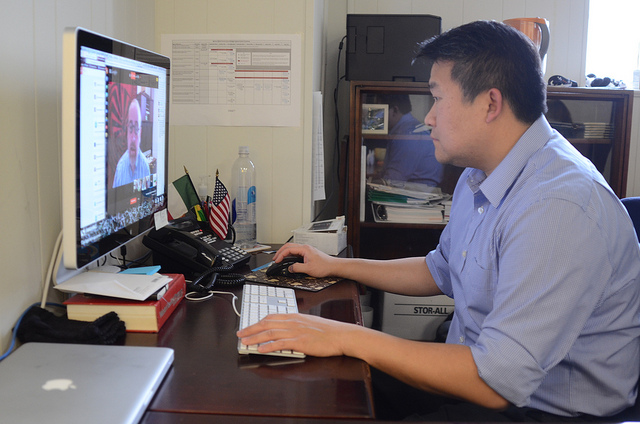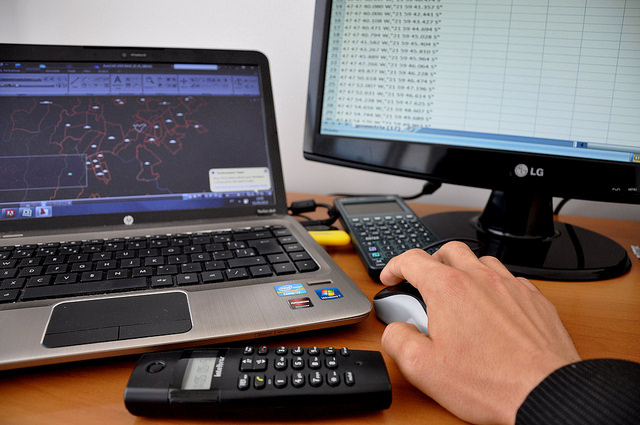Sitting Disease
The Guide to Sitting Disease and Other Office Illnesses and How To Prevent Them
Chapter 1: What is “Sitting” Disease and What Causes it?
Chapter 2: What Qualifies as a Sedentary Lifestyle?
Chapter 3: The Long-Term Effects of a Sedentary Lifestyle
Chapter 4: Chronic Illnesses from Sitting Disease
Chapter 5: More Serious Illnesses Caused by Sitting Disease
Chapter 6: How You Can Prevent Sitting Disease and Other Illnesses
INTRO
In today’s world, a large majority of the working class find themselves in an office setting.
These places of employment, defined by computers, office desks, and gray cubicles, are consistently leading to more unhealthy citizens around the world and causing a wide range of chronic injuries and more serious illnesses.
Research has connected major health problems, specifically cardiovascular issues, to sitting for extended periods of time. Unfortunately, this is a harsh reality many employees finding themselves having to deal with on a daily basis.
Today we will show you the negative effects of sitting for extended periods of time, and how you can take necessary steps to help improve your overall health in the long run.
Chapter 1: What is “Sitting” Disease and What Causes it?

Photo Credit: U.S. Department of Agriculture
Millions of workers around the world are in office positions for hours on end each day, seated in an office chair for eight or more hours. While this has been the norm for decades, it is now coming to light that this trend is highly unhealthy for those workers and can create serious medical problems moving forward.
The phrase “sitting disease” has been claimed by the scientific community and has essentially become the slang term for the effects that result from living a sedentary lifestyle.
From your morning commute to the office, sitting at your desk for the majority of the work day, commuting back home, and sitting on your couch at home, the effects of sitting are far more common than many people may realize.
In 2008, a study done by Vanderbilt University showed the average American spent an estimated 55 percent of the hours in which they were awake, sitting. This came out to an average of 7.7 hours, and many workers exceed this number greatly as roughly 86 percent of American workers sit during their entire shift at work.
Chapter 2: What Qualifies as a Sedentary Lifestyle?
You get to the gym four to five days in a week and get yourself on the treadmill on a regular basis, so naturally, so you should be getting an adequate amount of exercise, right?
Wrong.
While this amount of time spent at the gym is good for you and will help you become far more healthy, if you are still sitting for the large majority of your day, you are contributing to your sedentary lifestyle whether you realize it or not.
To understand sedentary itself, knowing the origin of the term and what it truly means is an excellent place to begin. From the Latin word “sedere,” it means “to sit,” an activity many Americans are far too familiar with.

Many Americans have become sedentary as the exercise basement floor requirements from the American Heart Association requires just 150 minutes of moderate physical activity in a week. If you average that out over seven days, that is a mere 21.4 minutes a day. If you are awake for at least 15 hours in a day, 21.4 minutes of moderate physical activity isn’t going to begin to put a dent in the problem of fixing your sedentary lifestyle.
Long story short, if you are doing less than 30 minutes per day of voluntary exercise, you are considered sedentary.
Chapter 3: Other Negative Effects of an Office Job
If you do fall in the category of many other Americans and are living a sedentary lifestyle, it is important to know what the potential effects of living this lifestyle can be.

In 2003, a study reported on by US News showed the results of 50,000 women being studied over a six-year period found that those who sat and watched TV for two hours more than other showed a jump in obesity by 23 percent. If they were sitting for two consecutive hours at work each day their obesity would go up by five percent.
Sitting disease is not the only problem which can arise from working in an office setting day in and day out.
- Germs: The office is generally quite a communal workplace. Many people occupying the same space from the kitchen, the break room, the bathroom, and more, you are likely in close proximity to many people who may not practice the same hypersensitive cleanliness and germophobia you live by.
With germs easily moving their way around the office sector, it makes it a breeding ground for sickness, no matter how many times you wash your hands.
- Stress: The effects of stress have been studied intensely in the 21st century, and the modern office job can create a high-stress environment, which can lead to a plethora of poor health problems including obesity, cardiovascular problems, and high blood pressure.
The stress of working under tight deadlines can also have negative effects on your learning and memory, according to a 2008 study done by the University of California at Irvine, which revealed severe stress actually hinders cell communication with the brain in the areas of learning and memory.
Chapter 4: Chronic Illnesses from Sitting Disease
If you have a sedentary lifestyle working at your desk in a low-quality office chair all day long without moving, there are plenty of chronic illnesses and problems you can suffer from by staying in the same position or making the same movements for hours on end during the day.
One of the first chronic injuries to be aware of from sitting all day long at your desk are injuries to your tendons, nerves, and skeletal system.

- Wrist and Arm Injuries: Carpal Tunnel Syndrome (CTS) is a highly common injury for those who have their wrists in a certain position for hours on end during the day, making similar motions throughout their shift. The most common worker for this injury to happen to are those who spend much of their days typing away on a keyboard.
Maybe you don’t type for a large majority of your day, but you do spend a good amount of time on the computer at work. You may be free from CTS, but you are still at a high risk for repetitive strain injury (RSI) if you keep your mouse in the same place all day long.
With this amount of pressure on your wrist and arm, you can cause damage to your nerves, sending chronic pain shooting up your arm whenever pressure is put on it in that similar position.

- Spinal Injuries: Are you able to stand at your job instead of sitting? This is an excellent opportunity for your healthy, as long as you have invested in comfortable shoes.
If you are wearing uncomfortable or painful shoes in a job where you are standing, this can lead to not standing up straight and throwing your posture off, which can then lead to spinal injuries, as well as chronic headaches and migraines. Not to mention, the pain of standing up may lead you to sit down for longer periods of time, creating an unhealthy cycle.
Chapter 5: More Serious Illnesses Caused by Sitting Disease
While chronic pains and discomforts can constantly nag and bother you, it is important to be aware of the far more serious problems from living a sedentary lifestyle and not staying active with your job, as they can be fatal in some cases.
In 2010, a study done by the American Cancer Society followed over 100,000 men and women over a 13-year period between 1993 to 2006.
In that timespan, they discovered that women who sat for more than six hours in a day were 94 percent more likely to die in that time period that those who sat for less than three hours.

As far as men were concerned, in the same study with the same time frames of sitting versus standing, they were 48 percent more likely to die than those who were sitting less than three hours in the day.
These premature deaths and higher rates of death can come from very serious complications of living a sedentary lifestyle and not getting enough quality exercise and movement in your day.

Along with cardiovascular disease, studies reported on by the Washington Post in 2014 revealed more serious problems and complications from sitting too long. These studies showed sitting lead to a far greater risk of developing colon, breast, and endometrial cancers.
Chapter 6: How You Can Prevent Sitting Disease and Other Illnesses
With all the negativity and seemingly inevitableness of living a sedentary lifestyle, it can be very discouraging to get your feet on the ground and do something.
There are plenty of things you can do to help counteract the sedentariness of your everyday life, however, and help yourself stay healthy and prolong your life through smart, preventative steps.
- Taking “Steps”- Taking the initiative and right steps toward being more active and healthy is crucial to becoming less sedentary, and actually taking physical “steps” is an excellent way to get started.

Challenge yourself to see how far you can walk in a day and count your steps. How many can you do in one day? 5,000? 10,000? 20,000? Giving yourself a goal to hit and counting it can make yourself more motivated to hit your goal for the day. There a wide variety of different tools and apps that can help you track your steps and many other aspects of your walk, including your smartphone or smartwatch.
- Move, Move, and Move Some More: While you can actively set aside time to get your steps in at some point in your day, there are also plenty of ways you can get them in naturally in the work day. Instead of holding meetings in the conference room, take your meeting mobile and walk around the office building or the block where you work.

Photo Credit: Ministry of Foreign Affairs of the Republic of Poland
If you are seated at your desk for hours on end during the day, set yourself reminders and alerts to get up and get moving. A timer on your computer or your phone is a great way to give yourself an alert to take a break for a few minutes and walk around the office. This will help you burn some calories, and give your eyes a rest from the computer screen.
- Just Get Up!: The 21st century office space is moving further away from the traditional desk and chair workspace, and moving into more innovative setups, specifically, standing desks. If you have the option to utilize a standing desk at your office, take advantage of the opportunity. You don’t have to stand for a full eight hours, but an hour standing rotating with an hour sitting will help you immensely in fighting obesity and other life-threatening diseases which come along with sitting. A stool can be a great investment as it allows sitting and standing to be at the same height, making the transition much easier throughout the day.
If you really want to take your standing desk workspace to the next level, investing in a small treadmill to set up your computer or laptop on is a great way to stand and get your feet moving at the same time.
What if you happen to work in a place where standing at your desk isn't a viable option? If you are in a scenario where you do have to sit down for most of the day, investing in ergonomically smart office furniture is in your best interest for your long term health. Whether it is an ergonomic chair or an add-on to your current chair, putting your spine in the best position possible will help you avoid chronic spinal injuries.
Conclusion
In order to lead a healthier lifestyle in your office job, these are just a few of the important steps to ensure a long and healthy existence. By getting up and moving as often as you can, investing in the proper ergonomic furniture for your office desk, and being aware of your sitting time, you can see big changes sooner than you might think.
Recent Posts
-
How to Minimize Noise in Your Office and Increase Productivity
Loud noise is more than just a nuisance for office workers. It’s a major distraction that diverts w …Jan 28th 2019 -
How to Promote Health and Wellness in the Office
Wouldn’t it be great if we were healthy 365 days a year? Unfortunately, this isn’t the case. Statis …Jan 26th 2018 -
Sitting Disease
The Guide to Sitting Disease and Other Office Illnesses and How To Prevent Them Chapter …Dec 31st 2015






